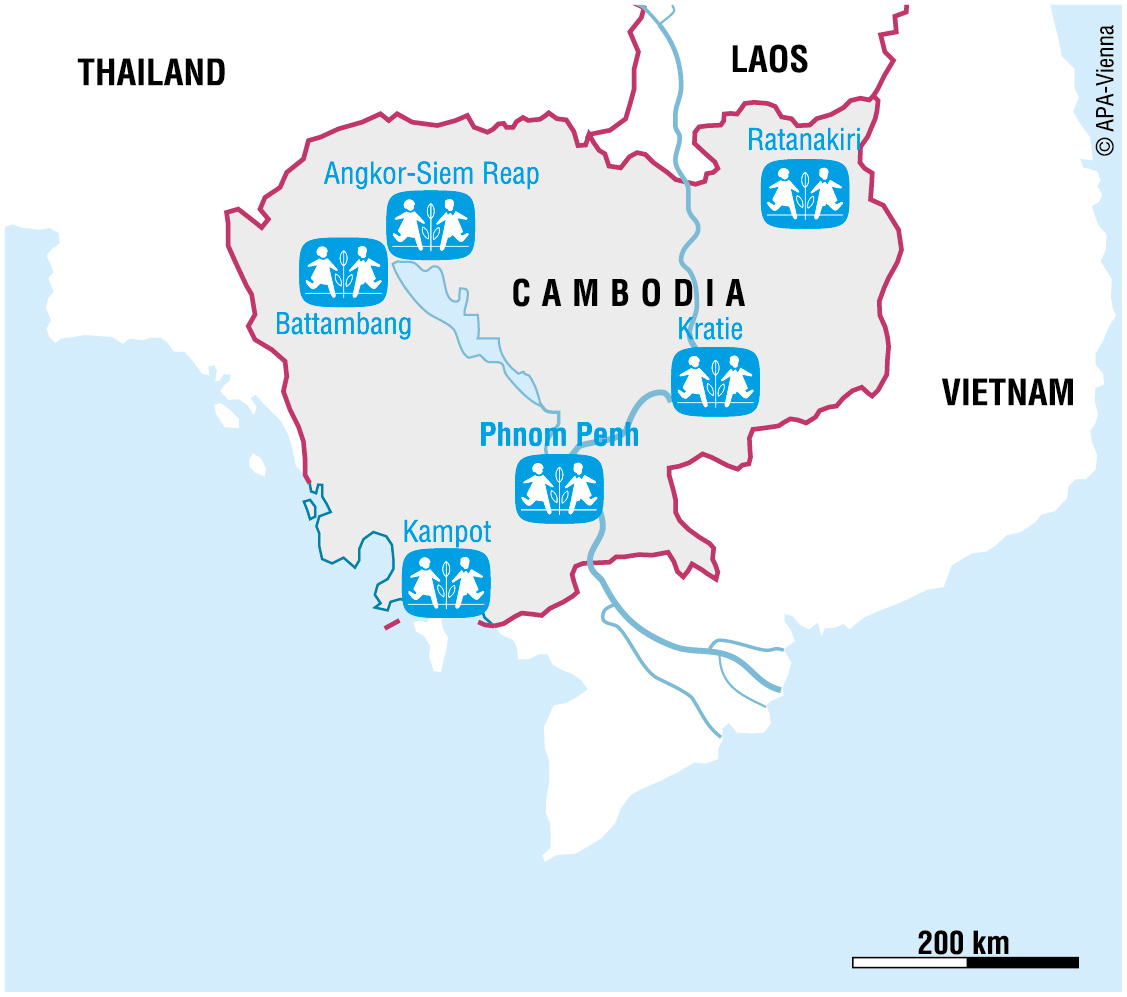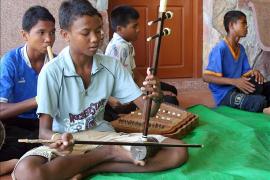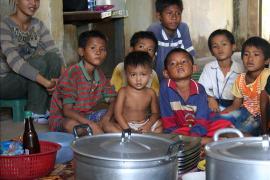
Vi er i Cambodia
Landmines still present a threat
The Kingdom of Cambodia is located in South-East Asia. It has boundaries with Thailand in the north-west and west, Laos in the north, Vietnam to the east and south-east and the Gulf of Thailand to the south. Around 14.8 million people live in Cambodia; the capital city of Phnom Penh has 1.5 million inhabitants.
Cambodia is still recovering from decades of conflict, which continued well into the 1990s. It is one of the most land mined countries in the world – since 1970, around 60,000 people have died due to explosions, and many more have been injured; the majority of these are children playing in the fields or herding animals.
Cambodia is still recovering from decades of conflict, which continued well into the 1990s. It is one of the most land mined countries in the world – since 1970, around 60,000 people have died due to explosions, and many more have been injured; the majority of these are children playing in the fields or herding animals.
One of the poorest countries in the world
Despite improving conditions over the past two decades, Cambodia remains one of the poorest countries in the world. Between 2004 and 2007, the economy grew by about ten per cent every year. As a result of the international financial crisis, the growth dipped in 2009, but has been on the rise ever since.
Around 48 per cent of the population works in agriculture. The main agricultural products include rice, rubber, corn, vegetables and tapioca. Tourism and the export of clothes are also important sources of income. The garment industry employs about five per cent of the population and accounts for 70 per cent of exports. In spite of this recent economic growth, about 18 per cent of Cambodians continue to live below the nationally-established poverty line. Most poverty is found in rural areas.
There have been some improvements in health. For example, the infant and under-five mortality rates have improved in recent years. Likewise there has been an increase in the average life expectancy, though it remains relatively low at 61.7 for men and 66.8 for women. However, the high number of people suffering from HIV/AIDS poses a new challenge for Cambodia's fragile health system. Around 76,000 people are currently known to be living with the condition, though due to the lack of testing, it is believed that many more people are not aware that they are affected.
The country's basic infrastructure is improving, but further work needs to be done, especially in rural areas. While the vast majority of people living in urban areas have access to improved drinking water, this figure drops to 61 per cent in rural areas. Around 88 per cent of city dwellers have access to improved sanitation as opposed to 31 per cent in rural areas.
Financial experts believe that the Cambodian economy has potential to grow further due to mining and the discovery of oil off its shores. However, corruption is a challenge, with the country rated as one of the most corrupt in the world. Human trafficking is also a problem; people are trafficked both internally (from rural to urban areas) and internationally. Many are tricked into thinking they will be working in jobs with good salaries, only to find themselves forced to work for no pay in factories, agriculture, or as domestic servants or sex workers.
Children are in need of protection
Demographically speaking, Cambodia is a very young country. There are around 5.6 million children under the age of 18.
An estimated 570,000 children live without parental care in Cambodia. Poverty, the years of conflict, migration and the rising number of people suffering from HIV/AIDS are the main reasons why children can no longer live with their families. It is reported that at least 6,000 children are living with HIV, but the figure is believed to be higher and growing – one third of all new infections are transmitted from mother to child.
About 36 per cent of children are involved in child labour. Children are found working in agriculture, the fishing industry, in quarries, as domestic servants or are forced to beg and sell on the streets.
SOS Children's Villages in Cambodia
Strengthening families: Working with local organisations, we support families so that they stay together. In addition to material assistance in the form of money, food and clothes, we also provide social and emotional support for children and parents.
Care in families: Children who can no longer stay with their birth families, find a loving home in an SOS family. Brothers and sisters grow up together and are looked after by an SOS mother.
Support for young people: Young adults live in special homes where youth leaders guide them on their path to an independent life.
Education: Young children are cared for in SOS Kindergartens. Older children can attend schools in Phnom Penh, Angkor-Siem Reap, Kampot and Battambang.
Care in families: Children who can no longer stay with their birth families, find a loving home in an SOS family. Brothers and sisters grow up together and are looked after by an SOS mother.
Support for young people: Young adults live in special homes where youth leaders guide them on their path to an independent life.
Education: Young children are cared for in SOS Kindergartens. Older children can attend schools in Phnom Penh, Angkor-Siem Reap, Kampot and Battambang.

